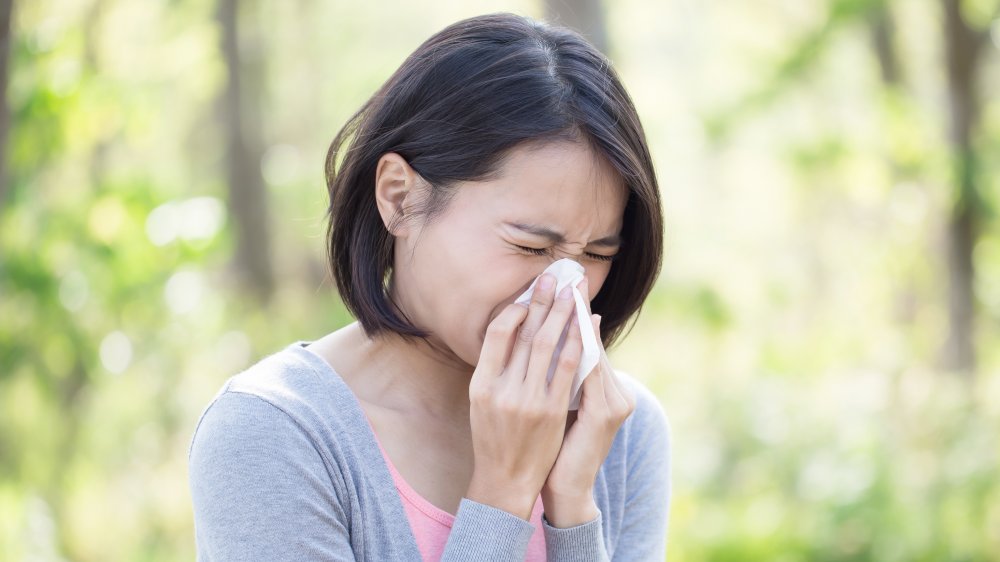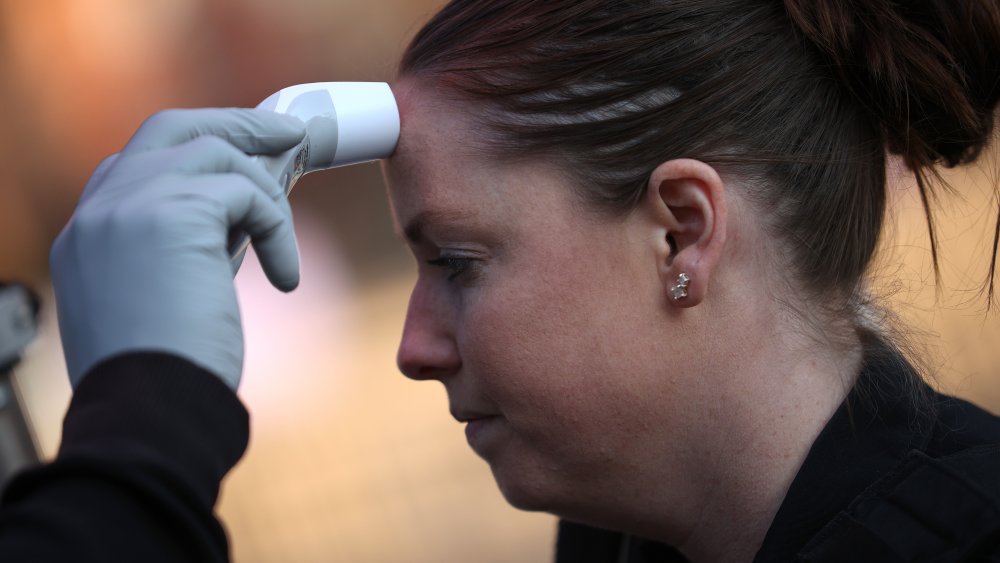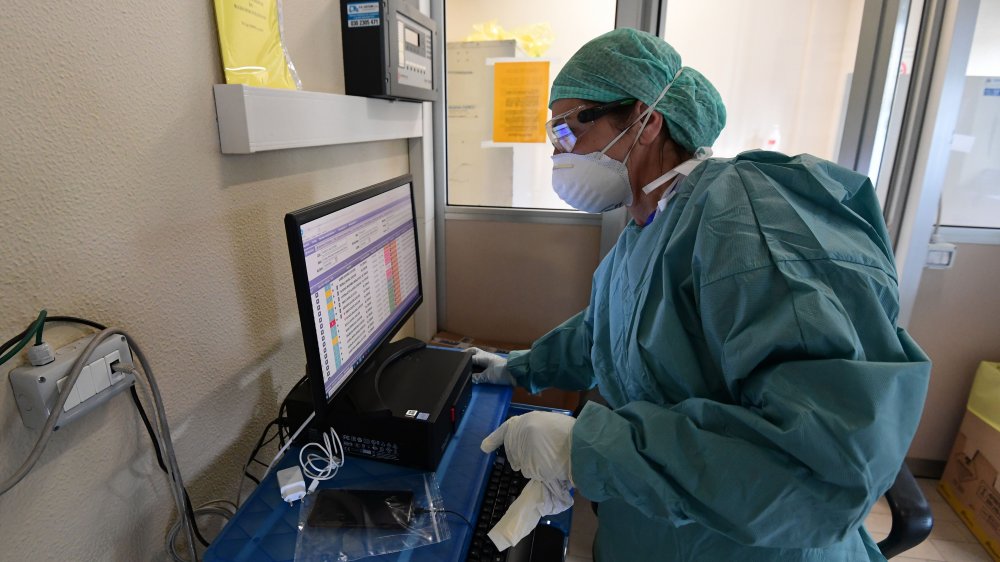How To Tell If It's Coronavirus, The Flu, A Cold, Or Allergies
Those of us who suffer from seasonal allergies and hay fever don't really look forward to spring anyway, but thanks to the onset of the COVID-19 coronavirus, every cough, sneeze, or sniffle has become a reason for us — and those around us — to panic. But doctors like Greg Poland, an infectious diseases professor at the Mayo Clinic and director of the Mayo Clinic's Vaccine Research Group, tells CNN that there is a noticeable difference between a seasonal allergy and the coronavirus, particularly if you're experiencing the same symptoms that you do every year.
"The issue with seasonal allergies is that they affect the nose and eye. They tend to be nasal, and most symptoms are localized to the head, unless you also experience a rash. The flu and the novel coronavirus, these affect other systems and the lower respiratory tract. You probably won't have a runny nose, but what you might have is a sore throat, a cough, a fever or shortness of breath," Poland says. But bear in mind that not all shortness of breath can indicate coronavirus, because while allergies might not normally trigger a shortness of breath, they could if you have asthma.
Dr. Maria Teresa Camacho, the medical director of a pediatric intensive care unit tells CBS that allergy sufferers shouldn't also expect to see their body temperatures go above normal range. "[With] allergies you don't have a fever and usually they are seasonal allergies, you know it's not all the time. You have congestion, but you don't have a fever and body aches," Camacho says.
Coronavirus, allergies, a cold, and the flu have different symptoms
In a chart that compares the COVID-19 coronavirus with a cold, the flu, and allergies, Business Insider says that someone with the virus will have a fever, dry cough, shortness of breath, will sometimes have headaches, aches and pains, a sore throat, and fatigue; but there won't necessarily be any diarrhea and a runny nose is rare. There is no sneezing.
Symptoms of a common cold include aches and pains, a sore throat, runny nose, and sneezing. Symptoms of a flu include a fever, a dry cough, headaches, aches and pains, a sore throat, and fatigue. And the most common allergy symptoms are a runny nose, sneezing, and shortness of breath.
It may be a bit more of a challenge to work out the differences between COVID-19, a cold, and a flu though, because as Poland says in a separate interview with CNBC that the cold and flu have similar symptoms to the coronavirus. But if you have all the flu symptoms and you can't breathe, it may be a good idea to get tested as quickly as possible if you're able.
"Based on what we know so far, [for most people] it will probably be like when you're laid up in bed with the flu. You'll start to feel sick, symptoms get worse until they peak, and then they gradually go away," Sandra Kesh, a New York-based infectious disease expert tells CNBC.
Coronavirus can go from mild to moderate very quickly
The WHO has said that coronavirus, unlike allergies, can go from mild or moderate to severe very quickly. "If you have an acute case of coronavirus or flu, you will feel so tired, so achy, you'd basically be driven to bed. Everybody would see the difference. Allergies may make you feel tired, but they're not going to cause severe muscle or joint ache," Poland tells CNN.
The infection usually starts in the nose, and once the virus is inside your body, it attacks the cells that protect your respiratory system. If the virus stays in the region of your upper airway, then Jeffery Taubenberger, who has studied infection in Spanish flu victims, tells Fortune that you're not likely to get as sick. But if it goes down your windpipe and into your lungs, it can cause pneumonia; it can also trigger your body's immune system, which is capable of creating more damage. "Your body is immediately trying to repair the damage in the lung as soon as it's happening. Normally, if this goes well, you can clear up your infection in just a few days," Taubenberger says.
The downside to your body healing itself so efficiently is that your immune system ends up damaging the cells responsible for protecting the lower respiratory tract, and as a result, Taubenberger says the lungs become vulnerable to a secondary bacterial infection caused by germs that normally live in our noses, throats, and in mechanical ventilators.


